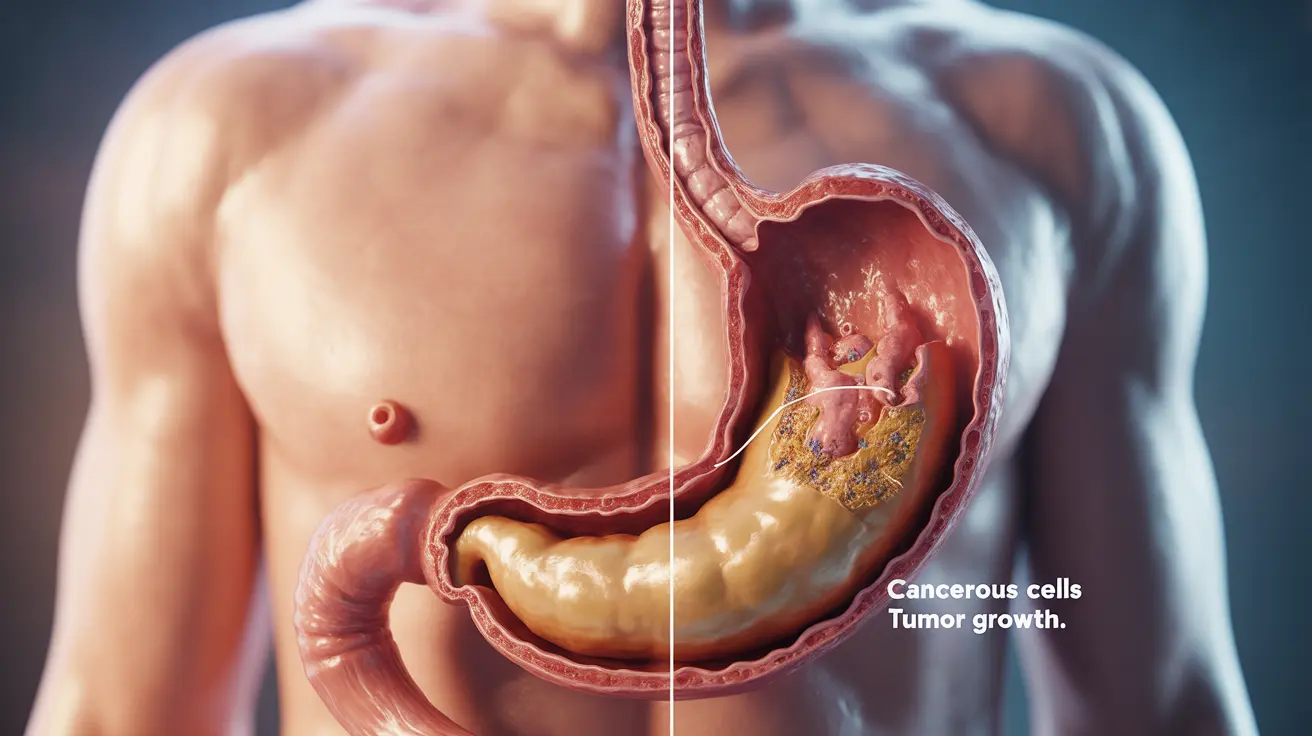Experiencing persistent stomach pain can be both concerning and confusing, especially when trying to determine its underlying cause. Two serious conditions that can cause similar symptoms are stomach cancer and stomach ulcers. While they share some common warning signs, understanding their distinct characteristics is crucial for proper diagnosis and treatment.
This comprehensive guide will help you understand the key differences between stomach cancer and ulcers, including their symptoms, risk factors, and diagnostic processes. Remember that while this information is helpful, it's essential to consult with a healthcare provider for proper evaluation of any concerning symptoms.
Understanding Stomach Cancer and Ulcers
Stomach cancer, also known as gastric cancer, develops when cells in the stomach lining grow abnormally and form tumors. In contrast, stomach ulcers are sores that develop in the stomach lining, usually due to bacterial infection or long-term use of certain medications.
Key Differences in Symptoms
While both conditions can cause discomfort, there are several distinguishing characteristics:
Stomach Ulcer Symptoms
- Burning pain between meals and at night
- Pain that temporarily improves with eating or antacids
- Bloating and burping
- Nausea
- Feeling full after small meals
Stomach Cancer Symptoms
- Persistent indigestion
- Unexplained weight loss
- Loss of appetite
- Difficulty swallowing
- Blood in stool or vomit
- Constant fatigue
- Progressive worsening of symptoms
Risk Factors and Causes
Stomach Ulcer Risk Factors
Common risk factors for developing stomach ulcers include:
- H. pylori bacterial infection
- Regular use of NSAIDs
- Excessive alcohol consumption
- Smoking
- Family history of ulcers
Stomach Cancer Risk Factors
Risk factors associated with stomach cancer include:
- Advanced age (typically over 65)
- H. pylori infection
- Family history of stomach cancer
- Chronic gastritis
- Diet high in salted, smoked, or processed foods
- Smoking and alcohol use
When to Seek Medical Attention
Certain symptoms warrant immediate medical evaluation:
- Severe, persistent abdominal pain
- Difficulty swallowing
- Bloody or black stools
- Vomiting blood
- Unexplained weight loss
- Persistent nausea and vomiting
Diagnostic Process
Healthcare providers use various methods to diagnose these conditions:
Common Diagnostic Tools
- Upper endoscopy
- Blood tests
- Imaging studies (CT scans, X-rays)
- Biopsy (for suspected cancer)
- H. pylori testing
Frequently Asked Questions
What are the main differences in symptoms between stomach cancer and stomach ulcers? Stomach ulcers typically cause burning pain that improves with eating, while stomach cancer symptoms tend to be more progressive and include unexplained weight loss, difficulty swallowing, and persistent indigestion that doesn't improve with treatment.
How can I tell if my stomach pain is caused by an ulcer or stomach cancer? While you cannot definitively self-diagnose, ulcer pain tends to be more localized and cyclical, often improving with food or antacids. Cancer pain is usually more persistent and accompanied by other symptoms like weight loss and loss of appetite. Professional medical evaluation is necessary for accurate diagnosis.
What are the common risk factors that increase the chance of developing stomach cancer versus stomach ulcers? Both conditions share some risk factors like H. pylori infection and smoking. However, stomach cancer risk increases with age, family history of gastric cancer, and diet high in processed foods, while ulcers are more commonly linked to NSAID use and bacterial infections.
When should I seek medical attention for symptoms that could be related to stomach cancer or an ulcer? Seek immediate medical attention if you experience severe abdominal pain, difficulty swallowing, bloody or black stools, vomiting blood, unexplained weight loss, or persistent nausea and vomiting.
How are stomach cancer and stomach ulcers diagnosed and confirmed by doctors? Doctors typically use upper endoscopy to visualize the stomach lining, along with blood tests and imaging studies. For suspected cancer, a biopsy will be performed. H. pylori testing is often done for suspected ulcers.




